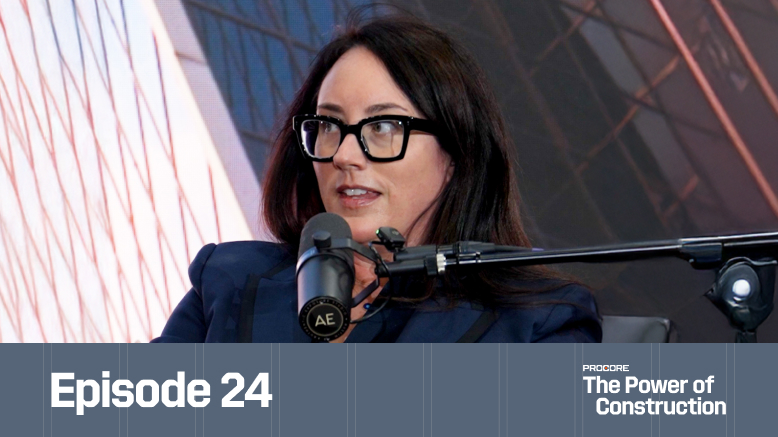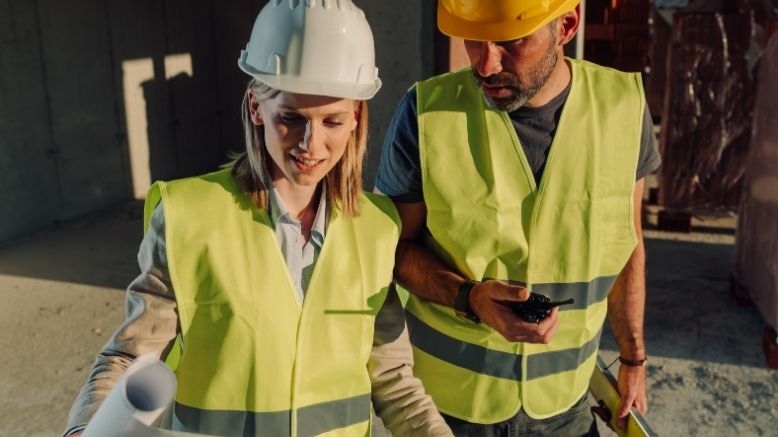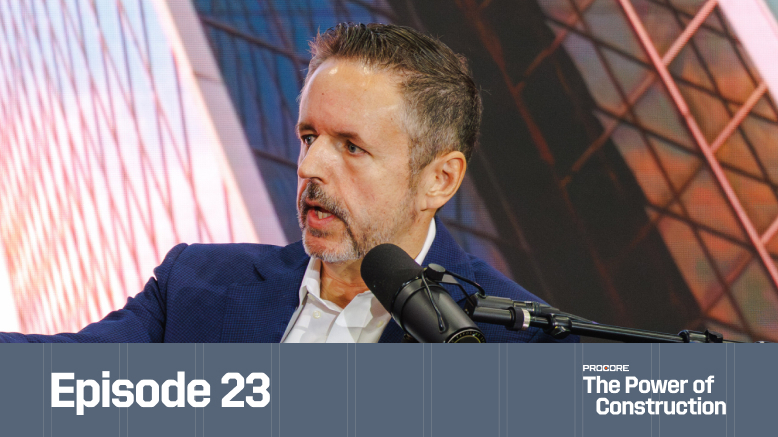— 9 min read
Embracing Offsite Construction for a More Sustainable Future
Last Updated Oct 13, 2025
Will Cotten
RNGD Prefab Leader
Will Cotten is the leader of RNGD Prefab, a subsidiary of RNGD, which exists to advance the construction industry forward. RNGD Prefab is a team of fabricators and craftsman who adhere to a True Builder philosophy and are implementing prefabrication deliveries, building in-house data analytics, and adopting innovative technologies. Previously as RNGD's Innovation Leader, Will Cotten incubated emerging teams, lead technology strategy, and augmented the company’s capabilities — implementing new technology and supporting the development of in-house construction analytics and prefabrication capabilities. In all his roles, Will enables RNGD to find and apply innovative solutions that advance the company’s overall mission of “building a better world.” Drawn to the firm's unparalleled drive, exemplified by a values-oriented band of team members, Will joined RNGD in 2018 as a Commercial Operations Intern. Since then, his ingenuity and unique insight have enabled him to rise to the occasion in new positions and deliver on strategic initiatives. A native of Prairieville, Louisiana, William earned his degree in Construction Management from Louisiana State University. His work ethic has revolved around the ethos of “actions not words.” He applies that same mentality as a board member for the Palmisano Foundation. He was also recognized as 2022 BuiltWorlds Leader of Tech Adoption. Aside from spending time with family and friends, William indulges in a love for nature and the human experience. He indulges in content on evolutionary biology, human psychology, philosophy, spirituality, and has a soft spot for New Orleans history. And when he’s not in the office, you’ll likely find him outdoors — on a long walk, golfing, hiking, camping, even gardening and cutting the grass. Will was named to the 2022 BuiltWorlds Adoption Top 50 List. The people within this list are all leading the way towards innovation for their companies and the industry overall.
Nick Moldaner
Chief Operating Officer
As Chief Operating Officer of RNGD, Nick Moldaner has been instrumental in the company's dynamic growth since its inception in 2013, overseeing key areas from preconstruction to project execution and cultivating its renegade culture. Drawing on a lifelong passion for construction that began at age 12, Nick thrives in high-intensity environments, applying a cool-under-pressure approach to support division leaders and executives in maintaining peak performance. His career, which includes experience as a project manager at Woodward Design+Build, reflects a drive to challenge the status quo and deliver lasting value for customers. Beyond his leadership at RNGD, Nick is deeply committed to mentoring the next generation of industry leaders, serving on advisory councils and inspiring frontline managers to cultivate their personal and professional growth.
James Hamilton
Writer & Producer
83 articles
James Hamilton is a writer based in Brooklyn, New York with experience in television, documentaries, journalism, comedy, and podcasts. His work has been featured on VICE TV and on The Moth. James was a writer and narrator for the show, VICE News Tonight, where he won an Emmy Award and was nominated for a Peabody Award.
Last Updated Oct 13, 2025

This article is part of a series exploring the transformation of RNGD, a contractor (and Procore user) with offices in Louisiana, Tennessee and Alabama. RNGD evolved from a conventional general contractor to a "true builder" and, as part of that process, established its own manufacturing facility in Metairie, Louisiana.
Since its founding in 2013, RNGD’s mission has been to change the status quo in construction and “reimagine an industry from the ground up.” This drive led RNGD to launch its own prefabrication facilities, where it manufactures structural steel and cold-form steel elements. By producing these critical elements in-house, RNGD positioned itself to construct and dry-in entire superstructures independently. Standardizing these processes enabled greater control over efficiency, cost and quality across its projects.
At the same time, creating prefab capabilities also helped RNGD take a step toward its commitment to addressing the longstanding inefficiencies and environmental concerns that often go hand-in-hand with traditional construction methods.
We asked Will Cotten, RNGD’s Innovation Leader and Nick Moldaner, COO, to share how offsite construction promotes sustainable building — and how RNGD is working to set a new standard for sustainable building practices.

Will Cotten, Innovation Leader, RNGD

Nick Moldaner, Chief Operations Officer, RNGD
Table of contents
Manufactured Parts: A Pathway to Sustainability
Nick: Data suggests — and it’s really clear — that inefficiency is littered through the traditional construction delivery method. The fact is, there’s an extreme amount of waste in the way the industry has been delivering construction for a long time. Something like 30% of construction materials end up as waste. Almost a quarter of all waste in the U.S. is estimated to come from construction and demolition. We try not to overcomplicate and just say, ‘That needs to be addressed.’ That’s why we look at things the way we do and we’re here to solve for that.
Will: That’s why prefabrication has been so impactful for us. The industrialized construction model is really something for initiatives associated with reduced waste and, I’d say, aspects of reduced carbon footprints. When we produce a cold-form steel or structural steel component or product, we are maximally reducing to fully eliminating any waste associated with that product.
For an exterior wall panel, for instance, we precision CNC (Computer Numerical Control) roll and cut every cold-form steel metal stud to where there’s no waste associated with it. It’s coming straight out of the mill in coil format. We’re decoiling it and rolling it, punching it and dimpling it. It’s coming out pre-cut to link, pre-dimpled and ready to be attached as that panel product.
You compare that to conventional methodology, where the trade partner will get that product from a supplier, who got it from a manufacturer, who is not cutting everything to exact lengths. So not only do you have the added trucking from manufacturer to supplier, from supplier to trade partner, and then maybe the trade partner shipping it to the job site, you also have the added waste of material drops on site. Sheathing, gypsum dust, silica dust getting in the air. If you’re doing a finished system that is a synthetic stucco or anything that requires a continuous insulation membrane, you get a foam that gets cut and rasped and potentially gets into stormwater drainage systems.
Moving all that into the shop environment means when the product leaves our facility, it’s fully finished and it’s just a matter of putting the panel up, caulking the joint between it and moving to the next one. So we’re reducing equipment, trucking, material waste and environmental hazards all by moving towards an industrialized construction model.
Planning for a Sustainable Future
Will: We knew if we were going to approach a different way of constructing buildings, we had to adopt some structural element, whether it be structural steel or concrete or timber. We elected to move in the direction of structural steel for a few reasons.
We’re inspired by the carbon sequestering capability of things like mass timber, but in our area of the southeast and Gulf Coast — with the wind zone ratings and what we face from a moisture mitigation standpoint being in coastal areas — you can’t beat steel, which is recyclable, and concrete as a resilient product that is going to create a long-term solution for folks in those areas to not be damaged by termines, mold, mildew, fire, etc.
Nick: Efficiency makes a huge difference, too. One of the major milestones in any project is top out and dry in. Those usually require the coordination of a hundred people, from design disciplines to procurement to fabrication to installation in the field. Our objective is to bring those things as close together and align them in a way that allows us to deliver as fast as possible so that a project is up, dry and ready to build out both exterior and interior finishes. Steel fabrication allows us to go from nothing to complete in a record time and as sustainably as possible.
Will: It’s been exciting to be part of. Over the last six years, RNGD has really become a vertically integrated, what we call, 'true builder.' We do a lot of specialty trade work. We have a heavy civil infrastructure arm of the business. We have a structural steel fabrication and erection side of the business, and then we have an advanced manufacturing and offsite prefab side of the business.
Recently, we just added MEP capability as well. What that vertical integration has allowed us to do is be able to bring structures out of the ground and dry it in under one umbrella and systemize it, so we can take more of the construction value chain in-house, pass that value along to the client. Our theory is, the way to shift the paradigm of construction is to make the job site more like a factory. If you can dry a building in, turn the lights on, and turn the AC on quickly, all of a sudden your finished trades are working just as efficiently as they would in a shop.
Nick: That’s what we call the Renegade Delivery Method. It’s a delivery method that considers all these variables and brings every discipline together early. If we can manage vertical integration by bringing all disciplines into more of a manufacturing mindset and have teams aligned around those processes, I think we can solve a lot of issues that have been existing for a long time and deliver projects faster, cheaper, at higher quality and more sustainably.
Creativity and Innovation
Nick: It’s in our company’s language and mentality to challenge the status quo. That’s really what this industry needs. If you look at the advancements in all our adjacent industries, it seems like the world is moving faster than us. We need to be open to change and to look at things differently.
Will: It makes a big difference. When you’re delivering components to the jobsite, there are no modifications that you want to make. You want it to fit perfectly. What that means is we have to use cutting-edge technology and design at a level of detail that is atypical for the current state of the industry.
We’re designing components down to the screw, rather than just some general massing that gets worked out in shop drawings later and gets a modification in the field. BIM and 4D scheduling are tools to coordinate with trades and help them visualize the way a building is going to come together, while CNC technology converts design files into information that machines can produce components off of with little to no waste. That technology lifecycle is critical and is a big part of the engine of our Renegade Delivery Method.
Nick: Very true. We’re leaning in hard on technology. The process really requires more advancements and tech, specifically for communication, collaboration and the accuracy of what we’re delivering. We’re modeling these projects in the digital world first, and the accuracy of that information has to carry straight to the shop floor and then to the field. The whole thing hinges on tight data connectivity from start to finish.
Staying Competitive While Pursuing Sustainability
Will: We saw research organizations publishing literature about transactional waste and, on a given project, 30 to 40 percent of the project is transactional waste. We’re saying if we can target even 20% of that, that at least is creating a more sustainable industry for construction.
Our Renegade Delivery Method is predicated upon offsite manufacturing. We’re detailing, designing and fabricating down to the millimeter, rather than down to inches. When those components arrive on site, we can’t afford to have rework and modifications being made. We’re not having metal and sheathing and waterproofing and foam drops all over a job site that end up in 30 yard containers that go to landfills. We have an integrated product delivery method, where we’re buying direct-from-manufacturers. We’re not buying from trade partners who are buying from suppliers who are buying from manufacturers and have fees associated with that tier structure. We’re accelerating project schedules, so owners are excited about it.
Nick: Owners are excited about it, but so are our team members. One of our earliest wins with this method was a project in Huntsville, Alabama. It went off without a hitch. Trucks started showing up, panels came off, they went in. 15 days later, the buildings dry. After the panels were done, one of our senior superintendents, who’s been doing this work for nearly 40 years told me, "I don't want to do another project any other way." For somebody who’s a veteran in the industry to give a genuine, heartfelt endorsement was amazing.
Will: That’s something we’re leaning into heavily and growing our “true builder culture” to appreciate the level of precision and the level of accuracy and what that means for layout, offsite manufacturing, the way we set up our shop, the way we truck and deliver, the logistics of just-in-time delivery to ensure that when the product arrives, it’s ready to get installed with zero defects. Precision manufacturing means very little to no waste and there’s nothing more sustainable than that method.
this is part of the series
RNGD Transformation
Was this article helpful?
Thank you for your submission.
0%
0%
You voted that this article was . Was this a mistake? If so, change your vote
Scroll less, learn more about construction.
Subscribe to The Blueprint, Procore’s construction newsletter, to get content from industry experts delivered straight to your inbox.
By clicking this button, you agree to our Privacy Notice and Terms of Service.
Thank you!
You’re signed up to receive The Blueprint newsletter from Procore. You can unsubscribe at any time.
Categories:
Written by
Will Cotten
RNGD Prefab Leader | RNGD
Will Cotten is the leader of RNGD Prefab, a subsidiary of RNGD, which exists to advance the construction industry forward. RNGD Prefab is a team of fabricators and craftsman who adhere to a True Builder philosophy and are implementing prefabrication deliveries, building in-house data analytics, and adopting innovative technologies. Previously as RNGD's Innovation Leader, Will Cotten incubated emerging teams, lead technology strategy, and augmented the company’s capabilities — implementing new technology and supporting the development of in-house construction analytics and prefabrication capabilities. In all his roles, Will enables RNGD to find and apply innovative solutions that advance the company’s overall mission of “building a better world.” Drawn to the firm's unparalleled drive, exemplified by a values-oriented band of team members, Will joined RNGD in 2018 as a Commercial Operations Intern. Since then, his ingenuity and unique insight have enabled him to rise to the occasion in new positions and deliver on strategic initiatives. A native of Prairieville, Louisiana, William earned his degree in Construction Management from Louisiana State University. His work ethic has revolved around the ethos of “actions not words.” He applies that same mentality as a board member for the Palmisano Foundation. He was also recognized as 2022 BuiltWorlds Leader of Tech Adoption. Aside from spending time with family and friends, William indulges in a love for nature and the human experience. He indulges in content on evolutionary biology, human psychology, philosophy, spirituality, and has a soft spot for New Orleans history. And when he’s not in the office, you’ll likely find him outdoors — on a long walk, golfing, hiking, camping, even gardening and cutting the grass. Will was named to the 2022 BuiltWorlds Adoption Top 50 List. The people within this list are all leading the way towards innovation for their companies and the industry overall.
View profileNick Moldaner
Chief Operating Officer | RNGD
As Chief Operating Officer of RNGD, Nick Moldaner has been instrumental in the company's dynamic growth since its inception in 2013, overseeing key areas from preconstruction to project execution and cultivating its renegade culture. Drawing on a lifelong passion for construction that began at age 12, Nick thrives in high-intensity environments, applying a cool-under-pressure approach to support division leaders and executives in maintaining peak performance. His career, which includes experience as a project manager at Woodward Design+Build, reflects a drive to challenge the status quo and deliver lasting value for customers. Beyond his leadership at RNGD, Nick is deeply committed to mentoring the next generation of industry leaders, serving on advisory councils and inspiring frontline managers to cultivate their personal and professional growth.
View profileJames Hamilton
Writer & Producer
83 articles
James Hamilton is a writer based in Brooklyn, New York with experience in television, documentaries, journalism, comedy, and podcasts. His work has been featured on VICE TV and on The Moth. James was a writer and narrator for the show, VICE News Tonight, where he won an Emmy Award and was nominated for a Peabody Award.
View profileExplore more helpful resources

How Are Partnerships in Construction Being Redefined?
In a market where cost, speed, and quality are table stakes, owners are demanding more than projects delivered on time and on budget. They want trusted partners who bring strategy,...

Bid Triangulation: How Owners, GCs, and SCs Each Benefit
Bids do not live on costs alone: While costs matter, they don’t tell the whole story. A systemized three-bid approach that expands the field of candidates reveals the gaps hiding...

Bid Triangulation: Better Bidding for Better Projects
Systemized bidding lays the groundwork for a project delivered on time and on budget — but true discipline collects multiple quotes to maximize efficiencies and minimize risk. Collecting three bids,...

Who Owns Construction’s Intelligence?
In this episode of The Power of Construction, we chat with Hugh Seaton, CEO of The Link.ai, to step past the buzz around tools and features and unpack what true...
Free Tools
Calculators
Use our calculators to estimate the cost of construction materials for your next project.
Templates
Find a template to help you with your construction project tasks.
Material Price Tracker
Get the latest U.S. retail prices and view historical trends for common building materials.
Glossary
Explore key terms and phrases used in the industry.
